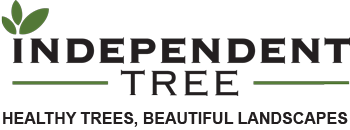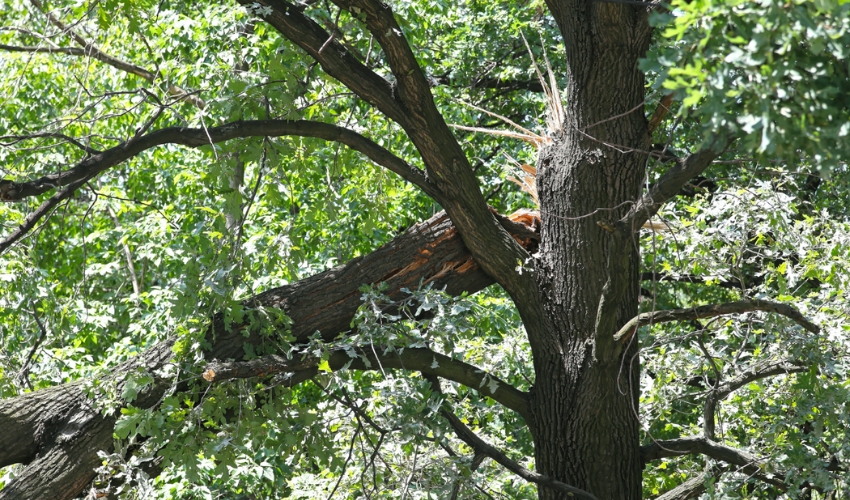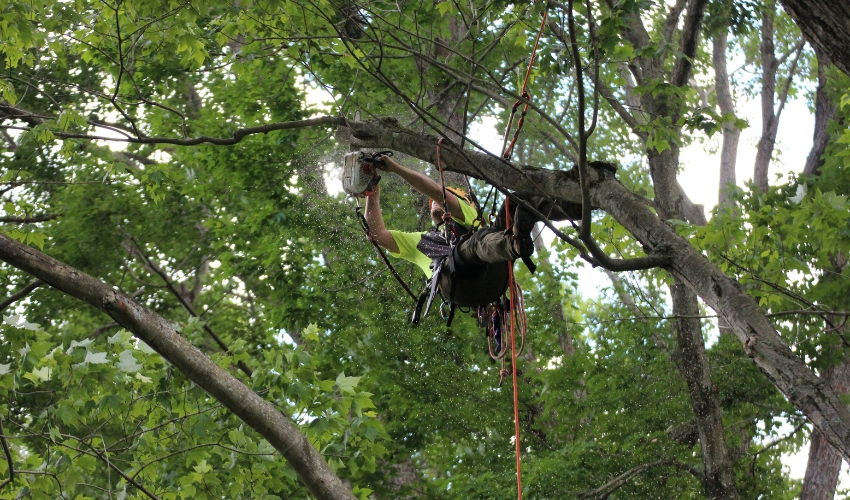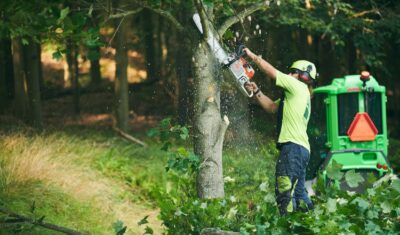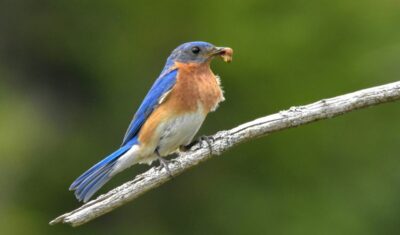In Northeast Ohio, our trees face tough weather conditions. Heavy snow, strong winds, and changing temperatures can weaken branches or even kill them. Regular pruning helps keep your trees healthy and safe by removing problem branches before they cause damage.
Knowing when to prune can make a big difference in keeping your trees strong and your property safe. Here are some clear signs that your trees might need a trim.
Key Takeaways
- Importance of Pruning: Regular pruning is crucial for maintaining tree health, preventing disease spread, and enhancing overall structure and safety.
- Key Signs for Pruning: Look for dead or dying branches, overgrown canopies, crossing limbs, broken branches, and unusual growth patterns as indicators that your trees need attention.
- Safety Considerations: Pruning reduces safety hazards by removing weak branches that could fall and cause damage, especially during storms.
- Professional vs. DIY Pruning: Hiring professional arborists is recommended for effective and safe pruning, as they possess the necessary skills and tools to protect both the tree and property.
- Long-term Benefits: Regular pruning not only improves the aesthetic appeal of trees but also increases their lifespan and resilience against harsh weather conditions.
Why Pruning Matters for Tree Health
Pruning is an important practice that helps maintain the health and structure of trees in urban and suburban areas across Northeast Ohio. By removing dead, damaged, or diseased branches, pruning not only improves the tree’s appearance but also prevents potential issues that could affect its overall health.
Here are a few key reasons why regular pruning is important:
- Prevents Disease Spread: Removing diseased branches can help stop infections from spreading to other parts of the tree or to nearby trees.
- Improve Air Circulation: Thinning areas of dense foliage allows more sun into the inner canopy and improves air circulation. This helps balance interior growth and reduces the chances of fungal infections.
- Improves Tree Structure: Pruning helps shape the tree, ensuring a strong structure that can withstand heavy snow and strong winds. This is especially important during our winter storms.
- Reduces Safety Hazards: Removing weak or overhanging branches reduces the risk of them falling and causing damage to property or injury to people.
- Increases Lifespan: By regularly removing dead or unhealthy branches, you can help your trees live longer and keep them looking their best.
Key Signs Your Trees Need Pruning
If you haven’t been keeping up with regular tree maintenance, look for these signs that your trees need pruning:
Dead or Dying Branches
Dead or dying branches can be dangerous, especially during storms. They’re more likely to break and cause damage to homes, cars, sheds, fences, and other structures. They also make trees look less appealing, so pruning deadwood can provide an aesthetic boost.
How can you tell if a branch is dead or dying? Look for:
- A lack of leaves during the growing season
- Brittle texture
- Discolored or peeling bark
- Fungi, like mushrooms, growing on the branch
Pruning these branches removes the risk of fall damage and helps the tree focus its energy on healthy growth, reducing the chance of pests and diseases taking hold. It also allows the tree to heal over the wound and protect itself from decay.
Broken or Damaged Limbs
Broken branches should be pruned right away. These weakened limbs are often the result of storms, heavy snow, or physical impacts, and are likely to fall and cause damage during future wind events. If left on the tree, broken branches can also create entry points for pests and diseases, increasing the risk of further harm to the tree.
A proper pruning cut removes these tree hazards while also allowing the tree to heal more effectively. Clean cuts allow the tree to close wounds more efficiently, reducing the chance of infection.
Overgrown or Dense Canopy
A beautifully pruned tree can boost curb appeal and possibly increase home value. However, overgrown, shaggy, dense trees may do the opposite. And it’s not just about looks.
When a tree’s canopy is too thick, it can block sunlight and air from reaching the inner branches. This leads to poor air circulation and increased moisture, which can promote fungal growth and lead to weak, damaged branches.
You’ll know a canopy is too dense if you see:
- Thick clusters of leaves and branches that block sunlight
- Sparse leaf growth on lower branches or inside the canopy
- Difficulty seeing through the tree from one side to the other
- Excessive weight on the outer branches, causing them to droop
Pruning thins out the canopy, allowing light and air to reach the tree’s interior. This improves the tree’s health, reduces the risk of disease, and enhances its overall appearance.
Crossing or Rubbing Branches
When branches grow too close together, they can cross and rub against each other, creating wounds. These wounds can become entry points for infections or pest infestations, weakening the tree and potentially leading to more serious issues like rot or decay.
When you notice crossing or rubbing branches, at least one of the branches should be removed to allow the other to thrive.
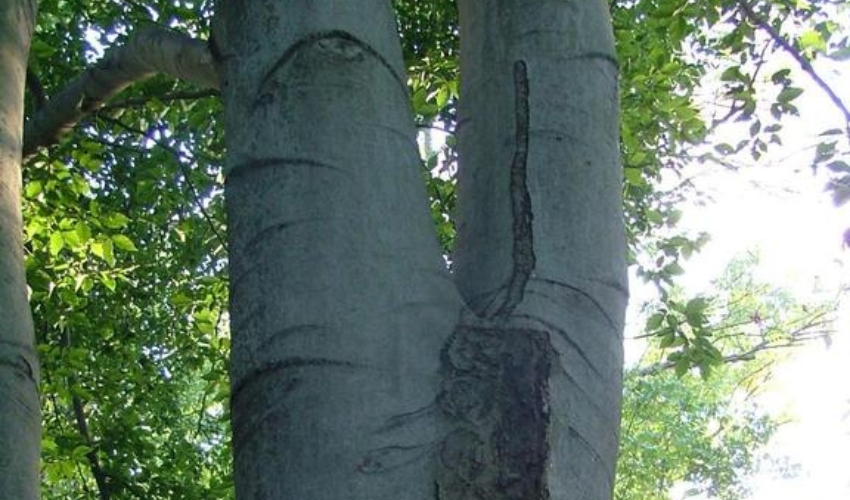
Jason Sharman, Vitalitree, Bugwood.org
Unusual Growth Patterns
Unusual growth patterns should be pruned as early as possible to prevent long-term issues. When trees develop multiple leaders or have branches growing in awkward directions, it can create structural weaknesses and affect the tree’s overall stability. These irregular patterns can also disrupt the tree’s natural shape, making it less balanced and more prone to damage.
How do you spot unusual growth patterns? Look for:
- Multiple main stems competing for dominance
- Branches growing inward or in awkward directions
- Uneven growth disrupting the tree’s shape
- Leaning trees, especially if the lean was developed suddenly
Pruning corrects these issues by removing competing leaders and redirecting growth. It’s much more effective when caught early on, rather than after the branches or stems get very large. This is why young trees should be pruned regularly to ensure they develop a strong central leader to minimize issues in the future.
Large, mature trees with structural issues, co-dominant stems, or weak branch unions may benefit from structural support services.
Diseased or Infested Branches
When a tree has diseased or pest-infested branches, it can weaken the whole tree. This makes it more likely to get damaged or sick. But if you catch the problem early, it might only affect a few branches.
Here’s what to look for:
- Leaves that are discolored or wilting
- Fungus growing on the branches, like powdery mildew or rust
- Odd growths on the branches, such as cankers or galls
- Visible insects, like borers or aphids
Pruning these affected branches helps stop the problem from spreading. By removing the damaged parts, you give your tree a better chance to get healthy again. Keep in mind your pruning tools can spread diseases to other parts of the tree unless sanitized in between cuts.
Tree Encroaching on Power Lines
Trees growing near power lines can be dangerous. Branches that touch or grow close to utility lines can cause:
- Power outages that might affect your whole neighborhood
- Fire risks, especially when it’s dry outside
- Danger of electric shock if someone touches the tree
- Damage to transformers or utility poles, which can lead to long repairs
Pruning these branches helps keep a safe distance between your tree and power lines. This lowers the risk of outages, fires, and accidents. If your trees are already close to power lines, you might need to call your local utility company for utility pruning. Never try to prune branches near power lines yourself.
Alternatively, consider removing large trees near power lines to avoid the need for constant pruning.
Tree Branches Encroaching on Homes and Other Structures
When trees grow too close to houses or other buildings, they can cause various issues and costly damage. Branches near structures can:
- Break off during storms and damage your home
- Provide easy access for pests like insects and small animals to enter your home
- Drop leaves and twigs that clog gutters
- Shorten the lifespan of asphalt shingles as they collect moisture
Look out for branches that:
- Extend closer than 6 feet over your roof
- Come within 3-4 feet of your home’s siding
- Block walkways, driveways, roadways, or doors
Trimming these branches helps protect your property from pest intrusion while maintaining your tree’s health. Regular pruning ensures your tree stays beautiful and reduces risks to your home.
Unfortunately, if a tree is fundamentally too close to your house, pruning alone may not prevent damage in case of major failure during storms. In such cases, consult with a professional arborist to assess the overall safety of the tree’s location.
<Image 3>
DIY vs. Professional Pruning
You might think about pruning your trees yourself to save money, especially if they’re small. But without the right know-how, you could end up hurting the tree, damaging your property, or even injuring yourself. DIY pruning accidents are common around Ohio, and it’s just not worth the risk.
Here’s why we always suggest hiring a professional:
- Safety: Climbing trees and using sharp tools can be dangerous without proper training.
- Tree Health: If you don’t prune correctly, you might damage the tree or make it more likely to get sick.
- Knowledge: Professionals know which branches to remove to keep the tree strong, healthy, and balanced.
- Property Protection: Without the right equipment, you might accidentally damage your home or other things in your yard.
- Time and Effort: What might take you several weekends could take professionals just a few hours.
- Legal Issues: If something goes wrong and you cause damage or injury, you could be held liable.
- Insurance: Professional tree companies have insurance, which protects you if accidents happen during the job.
Hiring a certified, insured tree care company ensures the job is done safely and correctly. They know how to prune without hurting the tree and have the right tools for any situation.
Using experts also protects you if anything goes wrong. Professional pruning is a smart investment in your trees’ long-term health and your property’s beauty.
Ready for Professional Pruning? Call Independent Tree Today!
Regular pruning is essential to keep your trees healthy, safe, and looking their best. Don’t wait until a problem becomes a hazard—take action now to protect your trees and property. Independent Tree’s certified arborists are here to help with expert pruning services tailored to your needs.
Call us at 440-564-1374 to request an estimate today.
Do your trees need pruning?
Call us today! Independent Tree will provide your tree pruning needs to make your trees look healthy, beautiful and well maintained.Recent Articles
Topics
About The Author

STAY IN THE LOOP
WITH OUR
LATEST UPDATES
"*" indicates required fields
